Space is a vast and mysterious place, with many surprising discoveries to be made. One of the most interesting objects are asteroids, which are small, rocky bodies that can range from a few kilometers in diameter to hundreds of kilometers. In this article, we’ll explore the 10 largest asteroids discovered so far.
10- 31 Euphrosyne
Diameter: 161 miles (267km)
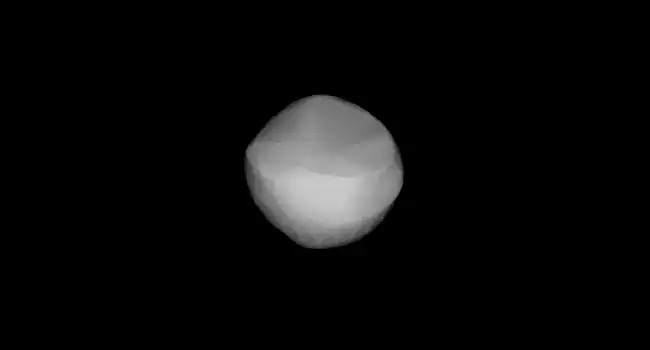
Discovered in 1854, Asteroid 31 Euphrosyne is one of the largest and most significant asteroids in our Solar System. Measuring at a formidable 165 miles (267 km) in diameter, it is only second to the largest asteroid, Ceres. Located in the asteroid belt between Mars and Jupiter, Euphrosyne orbits the sun every 5.4 years. It is made up mostly of silicate rocks and metals, and is believed to have formed from the same materials that created the planets in our Solar System.
This asteroid is named after Euphrosyne, the Greek goddess of joy, mirth, and merriment. Its large size is thought to have made it a target for ancient stargazers who named it after the goddess. Euphrosyne is believed to be the source of many meteorites that have been found on Earth, though the exact origin is still unknown.
9- 15 Eunomia
Diameter: 160 miles (270 km)
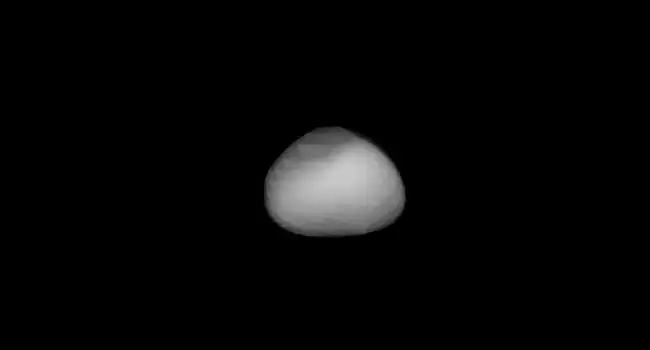
Discovered in 1851, 15 Eunomia is one of the largest asteroids of the asteroid belt. It is a C-type asteroid and is believed to be composed of carbon-rich material. It is located in the outer asteroid belt, between the orbits of Mars and Jupiter. 15 Eunomia has an average diameter of about 160 miles (270 km), making it one of the largest asteroids in the solar system. Its irregular shape and large size make it a significant object in the asteroid belt.
It has an albedo of 0.06, meaning it reflects about 6% of the sunlight that hits it. 15 Eunomia is believed to be the source of several meteor showers and can be seen with the naked eye at certain times of the year. It is an interesting object to observe, as its rotation and orbit change over the course of the year. 15 Eunomia is an important part of the asteroid belt and an intriguing object to study.
8- 87 Sylvia
Diameter: 170 miles (275 km)
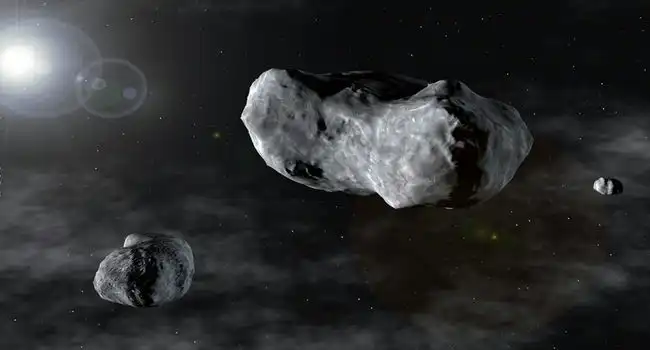
Photo Credit: Astronomy
Discovered in 1866, 87 Sylvia is one of the largest asteroids in the solar system. Measuring approximately 170 miles (275 km) in diameter, it is located in the outer asteroid belt, orbiting between Mars and Jupiter. It is also one of the most studied asteroids due to its large size and relative proximity to Earth. 87 Sylvia has a dark, primitive surface that reflects only about 7% of the sunlight it receives, making it one of the darkest asteroids known. It is also home to a large family of satellites, including two moons, Romulus and Remus, and a number of smaller bodies in orbit around it. 87 Sylvia is an important object in our understanding of the formation and evolution of the solar system.
7- 511 Davida
Diameter: 186 miles (298 kilometers)
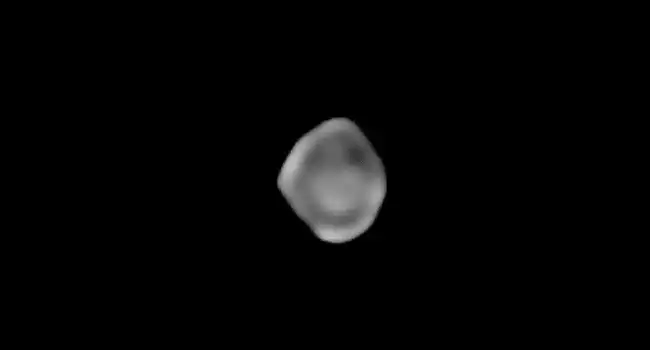
Photo Credit: Universe Today
Discovered in 1903, 511 Davida is one of the largest asteroids in the Solar System, measuring approximately 186 miles (298 kilometers) in diameter. Its orbit is located in the main asteroid belt between Mars and Jupiter, with a semi-major axis of 3.09 AU and an orbital period of 5.0 years. It is classified as a C-type asteroid, meaning that its surface is composed of carbonaceous material. 511 Davida has a high albedo of 0.14, which suggests it is covered in a layer of dust and dirt. It is also one of the few asteroids to have been observed from Earth.
6- 52 Europa
Diameter: 198 miles (319 kilometers)
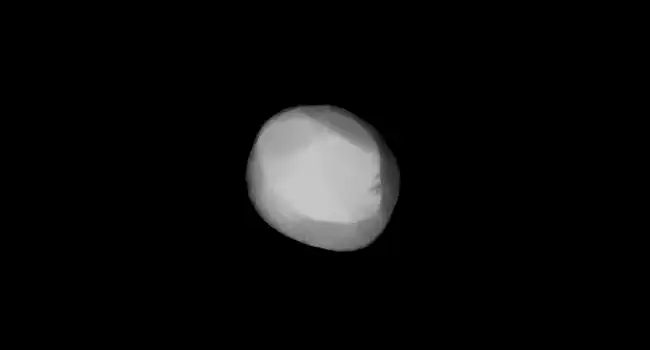
Photo Credit: 52 Europa
Discovered in 1858, 52 Europa is one of the largest asteroids in the Solar System. Its estimated diameter is between 198 miles (319 kilometers). It orbits the Sun at an average distance of 2.8 AU and has an orbital period of 4.43 years. 52 Europa is classified as a C-type asteroid, meaning it is composed of carbonaceous material. This makes it one of the most primitive bodies in the Solar System, and its composition is thought to be similar to that of the early Solar System. Its surface is believed to be made of a mix of clay minerals, carbonaceous chondrites, and hydrated minerals. Its albedo, or reflective power, is quite low, suggesting it is a dark object. Also, Its low albedo also suggests that it is an extremely old body. Impacts and collisions over time would have caused its albedo to decrease.
5- 704 Interamnia
Diameter: 206 miles (332 km)
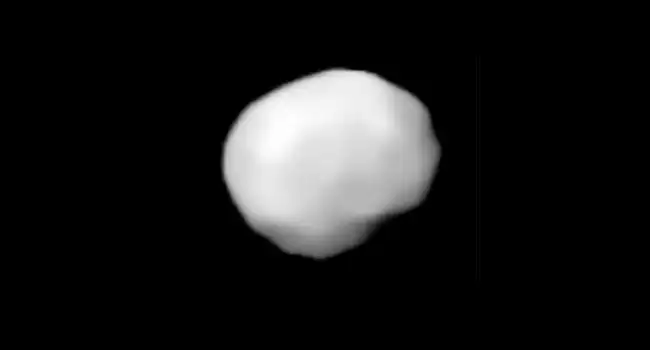
Photo Credit: Wikipedia
704 Interamnia is one of the biggest asteroids discovered in the Solar System. It is located in the main asteroid belt between the orbits of Mars and Jupiter. The asteroid measures around 206 miles (332 km) in diameter and has a mass estimated at 1.72 × 10^20 kg. It was discovered by Italian astronomer Vincenzo Cerulli in 1906. Its orbit is highly eccentric and it has an average orbital speed of 15.0 km/s. It is also a relatively dark object with an albedo of 0.06.
The asteroid is classified as a C-type asteroid and is composed of carbon-rich material. It is also a member of the Eos family of asteroids, which are believed to have originated from a single parent body. The asteroid has been studied extensively and its rotational period has been measured to be 8.82 hours. 704 Interamnia is the largest asteroid in the Eos family and is one of the most studied objects in the main belt.
4- 10 Hygiea
Diameter: 269 miles (433 km)
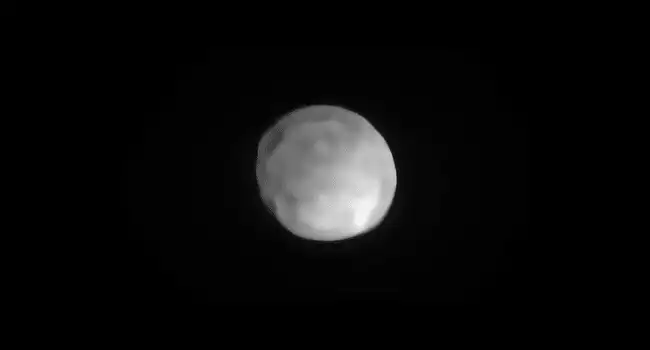
Photo Credit: Earth Sky
Hygiea is the fourth largest asteroid in our Solar System, located in the main asteroid belt between Mars and Jupiter. It has a diameter of approximately 269 miles (433 km), making it the 10th largest asteroid discovered. Hygiea is a primitive carbonaceous asteroid and is thought to be the largest main-belt object that is nearly spherical in shape. It was discovered in 1910 by the Italian astronomer Annibale de Gasparis. Hygiea is composed of a mixture of rock and ice. It is believed to contain several times the mass of all the other asteroids combined.
Its low albedo and high density suggest that it is likely composed of a mixture of carbonaceous material, water ice, and possibly other ices. Hygiea has an average orbital period of about 6.8 years and a rotation period of about 5.5 hours. It has been studied by spacecraft, including the Japanese Hayabusa mission, which returned a sample from the asteroid in 2010. Hygiea is also the namesake of the Hygiean family of asteroids, a group of asteroids that share similar orbital characteristics.
3- 2 Pallas
Diameter: 317 miles (511 kilometers)
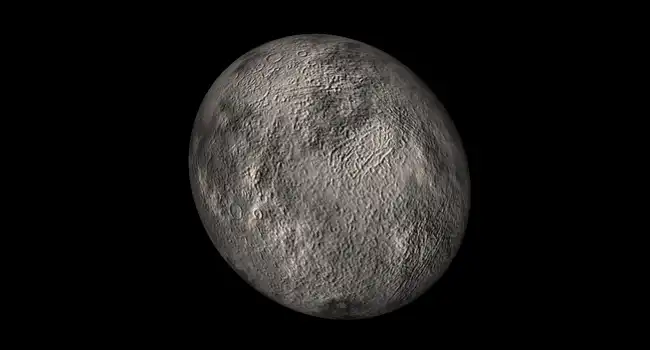
Photo Credit: Wikimedia
Discovered in 1802, 2 Pallas is one of the largest asteroids in the asteroid belt. It is believed to be the third largest in the asteroid belt, and the second most massive. It is an B-type asteroid, which is composed of silicate rocks and metals. The asteroid is roughly estimated to have a diameter of 317 miles (511 kilometers), making it the third largest object in the asteroid belt. 2 Pallas has an eccentric orbit, which means it follows an elliptical path around the sun. It has an orbital period of 4.6 years and a perihelion of 2.1 AU. 2 Pallas has a low albedo, which means the surface is dark and absorbs more sunlight than it reflects.
This asteroid is believed to have a carbonaceous chondritic composition, which means it is composed of clay minerals, silicate rocks and metals. Due to its large size and composition, 2 Pallas is believed to have once been a protoplanet. It is believed to have been part of the early solar system, and was destroyed by a catastrophic collision or other force. 2 Pallas is believed to have been broken up into its current form by the same force that created the asteroid belt.
2- 4 Vesta
Diameter: 326 miles (525 km)
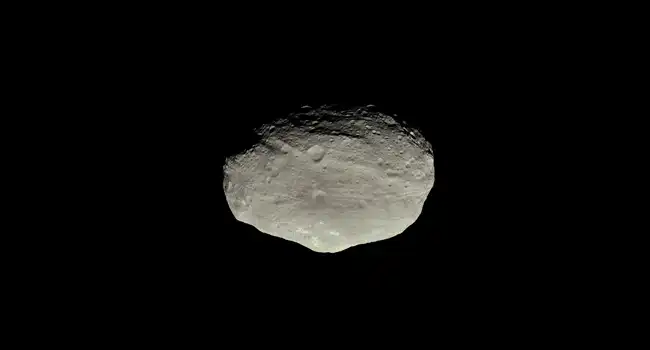
Photo Credit: Wikipedia
Discovered in 1807 by German astronomer Heinrich Wilhelm Olbers, 4 Vesta is one of the largest asteroids in the Solar System. Measuring approximately 326 miles (525 km) in diameter, it is the second-most-massive object in the asteroid belt after Ceres. With its high albedo, 4 Vesta is one of the brightest asteroids in the sky. Its surface is heavily cratered and has an ancient appearance.
It is believed to have an iron core and is thought to have been part of a protoplanet that failed to fully form. 4 Vesta is also the parent body of a unique family of meteorites, so-called “howardite–eucrite–diogenite” meteorites. Which are believed to have originated from the explosion of the asteroid’s surface. The asteroid’s orbit has remained relatively unchanged since its discovery, making 4 Vesta an ideal candidate for further study.
1- Ceres
Diameter: 590 miles (950 km)
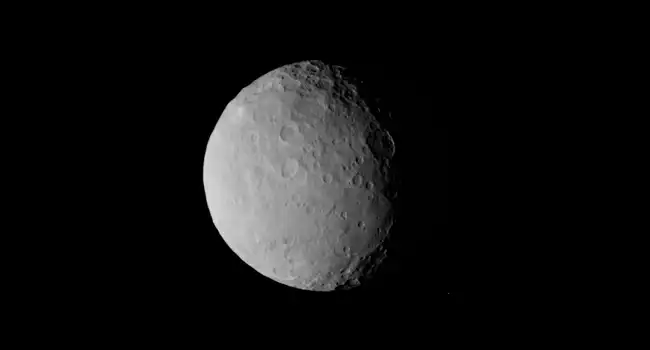
Photo Credit: Webb Telescope
Discovered in 1801, 1 Ceres is the largest and most massive of the asteroids in our Solar System, with an estimated diameter of 590 miles (950 km) and a mass of 9.5 x 10^20 kg. It is the only dwarf planet in the asteroid belt and is the only object in the belt that is known to be round due to its own gravity. 1 Ceres is composed mostly of rock and ice, with an outer layer of dark material that may be organic compounds. Its surface is heavily cratered, with some areas of bright material, likely due to ice or salts. It is believed to have an icy mantle and possibly an internal ocean beneath its surface. 1 Ceres is the brightest and most massive object in its region of the asteroid belt, and it has been studied extensively by astronomers for over two centuries.


